
What Is the MCL and Why Does It Cause Pain?
The medial collateral ligament runs along the inner side of the knee, connecting the thigh bone to the shin bone
The medial collateral ligament (MCL) is a band of tissue approximately 8-10 centimeters in length that runs along the inner side of your knee. It connects your thigh bone (femur) to your shin bone (tibia) and provides crucial stability to your knee joint, particularly against forces that push your knee inward.
MCL pain occurs when this ligament becomes damaged, typically through stretching, partial tearing, or complete tearing of the ligament fibers. Unlike some other knee structures, the MCL has a good blood supply, which generally allows for effective healing with proper treatment.
The MCL works alongside other key knee ligaments, including:
- The anterior cruciate ligament (ACL)
- The lateral collateral ligament (LCL)
- The posterior cruciate ligament (PCL)
When functioning properly, these ligaments work together to maintain knee stability during movement. However, when the MCL is injured, it can lead to significant pain and instability, particularly when moving sideways or pivoting.
Common Causes of MCL Pain
Contact sports like football often lead to MCL injuries from side impacts to the knee
MCL pain typically results from specific movements or impacts that place excessive stress on the inner knee. Understanding these causes can help you both prevent injuries and recognize when you might have damaged your MCL.
Sports-Related Causes
Athletes are particularly vulnerable to MCL injuries, especially those who participate in:
- Contact sports – Football, rugby, and hockey players often experience MCL tears from direct blows to the outside of the knee
- Cutting sports – Basketball, soccer, and tennis involve quick directional changes that can stress the MCL
- Winter sports – Skiing accidents frequently lead to MCL injuries, particularly when falls cause the knee to twist while the foot remains planted
Non-Sports Causes
MCL pain isn’t limited to athletes. Other common causes include:
- Falls – Particularly when the knee twists as you fall
- Auto accidents – Impact forces can damage knee ligaments
- Repetitive stress – Over time, certain movements can gradually weaken the MCL
- Aging – Natural deterioration of ligament strength can make tears more likely
Important: The most common mechanism for MCL injury is a valgus force—when the knee is pushed inward while the foot remains planted. This often happens during a side impact to the outer knee or during a sudden change in direction.
Recognizing MCL Pain Symptoms
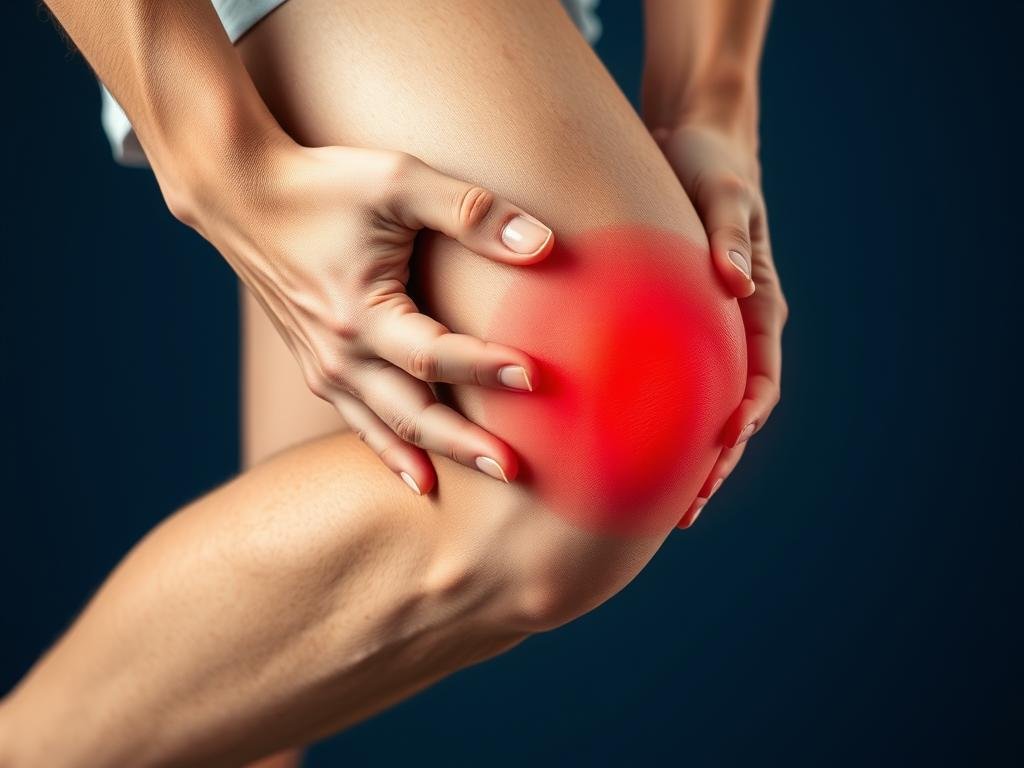
Swelling and tenderness along the inner knee are common symptoms of MCL injury
Identifying MCL pain early can lead to more effective treatment and faster recovery. The symptoms of an MCL injury can vary based on the severity of the damage, but typically include:
Immediate Symptoms
- Popping sound – Many people report hearing a distinct “pop” at the moment of injury
- Sudden pain – Sharp pain along the inner side of the knee
- Immediate swelling – The inner knee area may swell rapidly
- Instability – Feeling like your knee might “give way” when you put weight on it
Ongoing Symptoms
- Tenderness – Pain when touching the inner knee area
- Stiffness – Difficulty bending or straightening the knee
- Bruising – May appear a day or two after the injury
- Locking sensation – The knee may feel like it catches during movement
Severity Levels of MCL Injuries
Healthcare providers classify MCL injuries into three grades based on severity:
| Grade | Description | Symptoms | Stability |
| Grade 1 | Mild tear (less than 10% of fibers torn) | Mild pain and tenderness, minimal swelling | Knee remains stable |
| Grade 2 | Moderate tear (partial tear of the ligament) | Moderate pain, noticeable swelling, difficulty walking | Some instability when stressed |
| Grade 3 | Severe tear (complete rupture of the ligament) | Severe pain, significant swelling, inability to bear weight | Significant instability |
Experiencing MCL Pain Symptoms?
If you’re showing signs of an MCL injury, getting a proper diagnosis is crucial for effective treatment. Don’t delay seeking professional help.
Consult a Specialist
Diagnosing MCL PainThe valgus stress test is commonly used to diagnose MCL injuries
Proper diagnosis of MCL pain is essential for determining the appropriate treatment plan. If you suspect an MCL injury, a healthcare provider will typically use several methods to assess your condition:
Physical Examination
Your doctor will likely perform the following tests:
- Valgus stress test – Applying pressure to the outside of your knee while your leg is slightly bent to check for MCL instability
- Palpation – Feeling along the inner knee to locate areas of tenderness
- Range of motion assessment – Checking how well your knee bends and straightens
- Swain test – Examining for rotational instability by flexing the knee to 90 degrees and rotating the tibia
Imaging Tests
To confirm the diagnosis and rule out other injuries, your doctor may order:
- MRI (Magnetic Resonance Imaging) – The most effective imaging test for MCL tears, showing detailed images of soft tissues
- Ultrasound – Can help visualize the MCL and assess the extent of damage
- X-rays – While they don’t show ligaments, X-rays can rule out fractures that might cause similar symptoms
It’s important to get a proper diagnosis even if you can still walk on your injured knee. Some MCL tears, particularly Grade 1 injuries, may allow for walking despite the damage, but proper treatment is still necessary for complete healing.
Treatment Options for MCL Pain
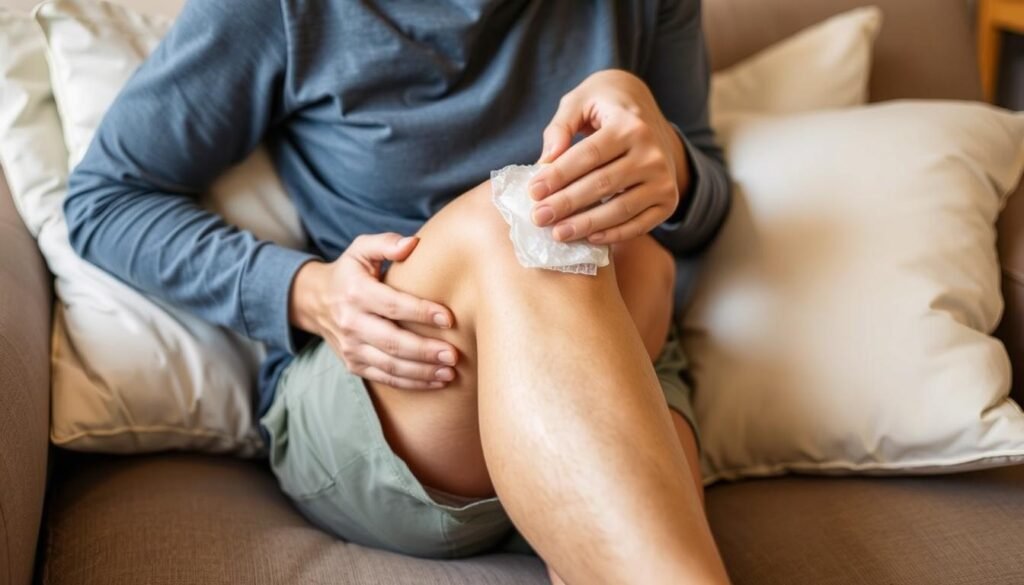
The RICE method is a fundamental first step in treating MCL injuries
Treatment for MCL pain varies depending on the severity of the injury. The good news is that most MCL injuries heal well without surgery due to the ligament’s good blood supply. Here are the primary treatment approaches:
Non-Surgical Treatments
The RICE Method
For immediate care following an MCL injury, follow the RICE protocol:
- Rest – Avoid activities that cause pain and limit weight-bearing on the affected knee
- Ice – Apply ice packs for 15-20 minutes every 2-3 hours to reduce swelling
- Compression – Use an elastic bandage to provide support and reduce swelling
- Elevation – Keep your knee raised above heart level when possible to minimize swelling
Additional Conservative Treatments
- Knee bracing – A hinged knee brace can prevent side-to-side movement while allowing the MCL to heal
- Crutches – To reduce weight-bearing on the injured knee
- Pain medications – Non-steroidal anti-inflammatory drugs (NSAIDs) like ibuprofen can help manage pain and swelling
- Physical therapy – Exercises to restore strength and range of motion
- Activity modification – Avoiding movements that stress the MCL during healing
- Gradual return to activities – Following a structured plan to safely resume normal activities
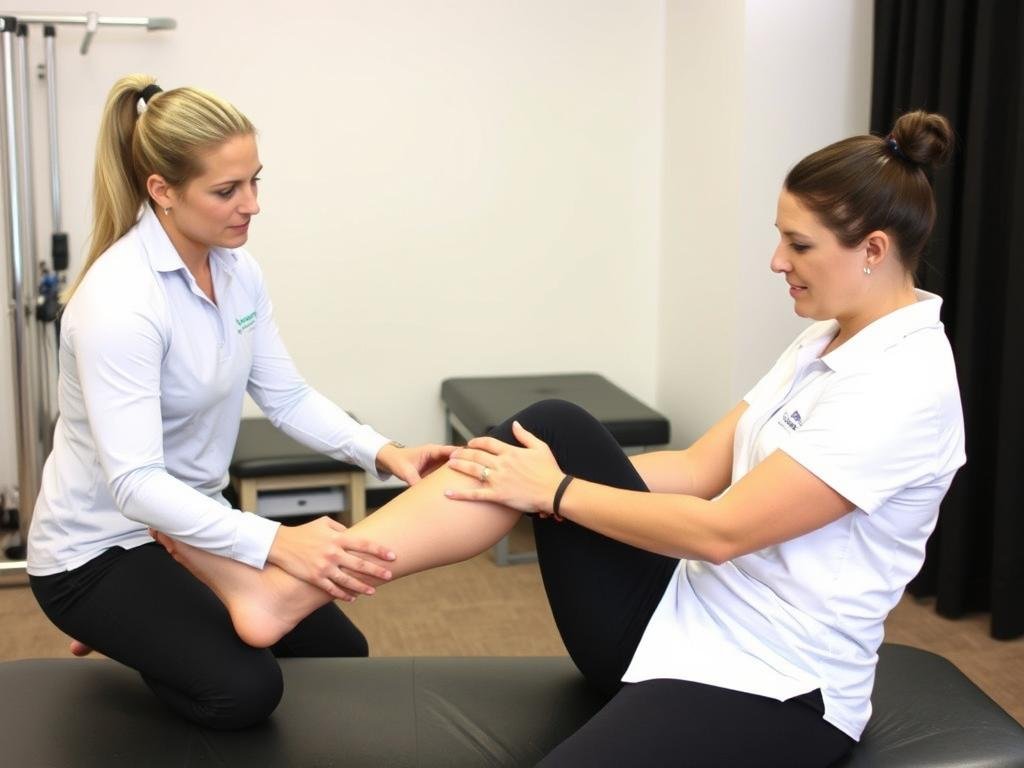
Physical therapy plays a crucial role in MCL recovery
Surgical Treatment
While most MCL injuries don’t require surgery, it may be necessary in certain situations:
- Complete (Grade 3) tears that don’t heal with conservative treatment
- MCL tears combined with other knee injuries (such as ACL or meniscus tears)
- Cases where the MCL has pulled away from the bone
- Professional athletes who need optimal stability for their sport
Surgical options include repairing the torn ligament or reconstructing it using a tissue graft. Recovery from MCL surgery typically involves a period of immobilization followed by progressive rehabilitation.
Recovery Timeline
The time needed to recover from an MCL injury depends on its severity:
- Grade 1 (mild) – 1-3 weeks
- Grade 2 (moderate) – 4-6 weeks
- Grade 3 (severe) – 6+ weeks
- Post-surgical recovery – 3-6 months
Rehabilitation for MCL Pain
Straight leg raises help rebuild quadriceps strength during MCL rehabilitation
Rehabilitation is crucial for proper healing and preventing future MCL injuries. A comprehensive rehabilitation program typically progresses through several phases:
Phase 1: Acute Recovery (1-2 Weeks)
- Control swelling and pain with RICE method
- Gentle range of motion exercises
- Isometric strengthening exercises (muscle contractions without joint movement)
- Gradual weight-bearing as tolerated
Phase 2: Intermediate Recovery (2-4 Weeks)
- Progressive weight-bearing
- Increased range of motion exercises
- Stationary biking to improve mobility
- Light resistance exercises for surrounding muscles
- Balance and proprioception training
Phase 3: Advanced Recovery (4-6 Weeks)
- Full weight-bearing activities
- Progressive strengthening exercises
- Sport-specific or activity-specific training
- Agility drills and controlled pivoting movements
Phase 4: Return to Activity (6+ Weeks)
- Functional testing to ensure readiness
- Gradual return to sports or normal activities
- Continued strengthening and maintenance exercises
- Possible use of a protective brace during high-risk activities
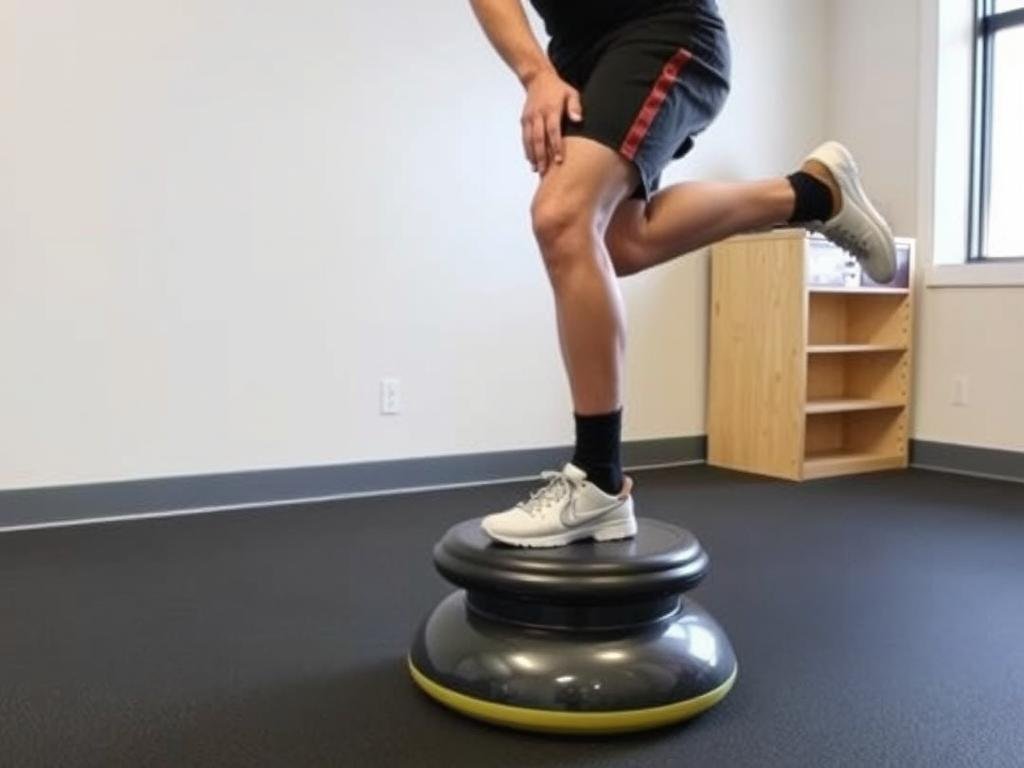
Balance and proprioception exercises are important for advanced MCL rehabilitation
“Rehabilitation after an MCL injury should focus not only on healing the ligament but also on strengthening the surrounding muscles to provide better support and prevent future injuries.”
Preventing MCL Pain and Injuries
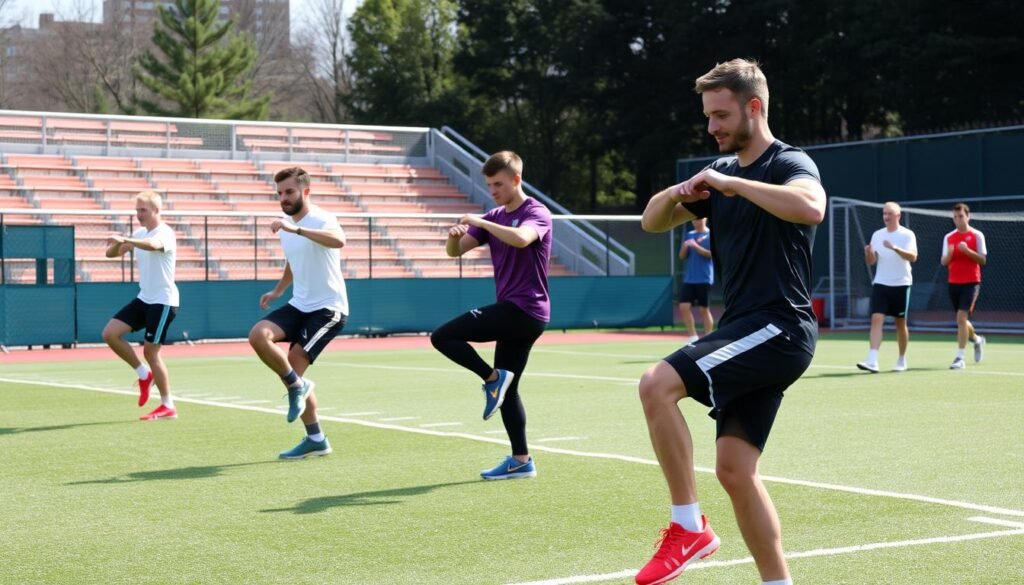
Proper warm-up exercises can significantly reduce the risk of MCL injuries
While not all MCL injuries can be prevented, several strategies can help reduce your risk:
Strengthening Exercises
Focus on exercises that strengthen the muscles supporting your knee:
- Quadriceps exercises – Straight leg raises, squats, and leg presses
- Hamstring exercises – Hamstring curls and bridges
- Hip strengthening – Side leg raises and clamshells to improve stability
- Core exercises – Planks and stability ball exercises to improve overall balance
Proper Technique
- Learn and practice proper landing techniques when jumping
- Develop good cutting and pivoting mechanics for sports
- Maintain proper form during weightlifting exercises
- Use appropriate equipment and footwear for your activities
Protective Measures
- Consider wearing a knee brace during high-risk activities, especially if you’ve had a previous MCL injury
- Always warm up properly before physical activity
- Gradually increase intensity and duration of activities
- Listen to your body and rest when needed
Warning: If you’ve previously injured your MCL, you’re at higher risk for future injuries. Take extra precautions and consider working with a physical therapist to develop a personalized prevention program.
Frequently Asked Questions About MCL Pain
How long does MCL pain last?
The duration of MCL pain depends on the severity of the injury. For mild (Grade 1) MCL tears, pain typically subsides within 1-3 weeks with proper treatment. Moderate (Grade 2) tears may cause pain for 4-6 weeks, while severe (Grade 3) tears can result in pain lasting 6 weeks or longer. Following your healthcare provider’s treatment recommendations and completing a full rehabilitation program can help minimize pain duration and prevent chronic issues.
Can MCL pain heal without surgery?
Yes, most MCL injuries heal well without surgery. The MCL has an excellent blood supply, which promotes natural healing. Conservative treatment including rest, ice, compression, elevation (RICE), bracing, and physical therapy is usually sufficient for complete recovery. Surgery is typically only necessary for severe tears combined with other knee injuries or in cases where the MCL has completely detached from the bone.
Can I walk with an MCL tear?
Your ability to walk depends on the severity of your MCL tear. With a Grade 1 (mild) tear, you can usually walk, though it may be painful. A Grade 2 (moderate) tear makes walking more difficult due to decreased stability. With a Grade 3 (severe) tear, walking is typically very difficult and not recommended without proper support like crutches or a brace. Even if you can walk, it’s important to follow your healthcare provider’s advice about weight-bearing to ensure proper healing.
How can I tell if my MCL pain is serious?
Signs that your MCL pain may be serious include: significant swelling, inability to bear weight on the affected leg, feeling of instability or the knee “giving way,” limited range of motion, and a popping sound at the time of injury. If you experience these symptoms, you should seek medical attention promptly. Only a healthcare professional can properly diagnose the severity of an MCL injury and recommend appropriate treatment.
When can I return to sports after an MCL injury?
Return to sports after an MCL injury varies based on severity. For Grade 1 injuries, you may return in 1-3 weeks; Grade 2 injuries typically require 4-6 weeks; and Grade 3 injuries may need 6+ weeks or longer. Your healthcare provider will assess your recovery based on pain levels, stability, strength, and range of motion before clearing you for sports. A gradual return with possible protective bracing is often recommended to prevent re-injury.
Conclusion: Taking Control of Your MCL Pain
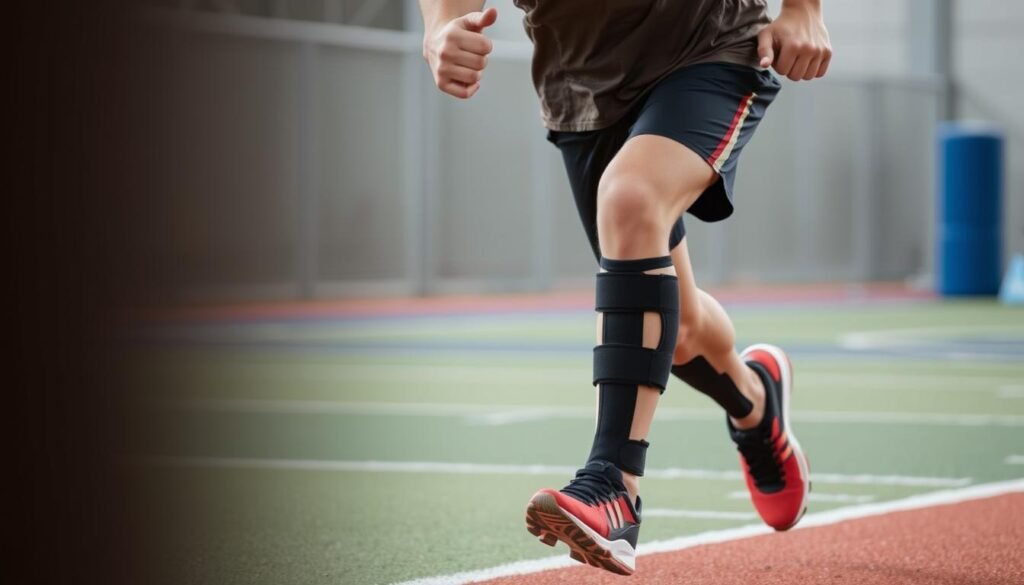
With proper treatment and rehabilitation, most people can return to their normal activities after an MCL injury
MCL pain, while often debilitating in the short term, typically responds well to appropriate treatment. The key to successful recovery lies in prompt diagnosis, following a structured treatment plan, and completing a comprehensive rehabilitation program. By understanding the causes, recognizing the symptoms, and knowing the treatment options for MCL pain, you can take an active role in your recovery process.
Remember that each MCL injury is unique, and recovery timelines can vary based on individual factors such as age, overall health, and the severity of the injury. Working closely with healthcare professionals will ensure you receive personalized care tailored to your specific needs.
If you’re experiencing symptoms of an MCL injury, don’t delay seeking medical attention. Early intervention can lead to better outcomes and a faster return to the activities you enjoy.
Ready to Address Your MCL Pain?
Don’t let MCL pain limit your activities or affect your quality of life. Consult with a specialist today to get a proper diagnosis and personalized treatment plan.
